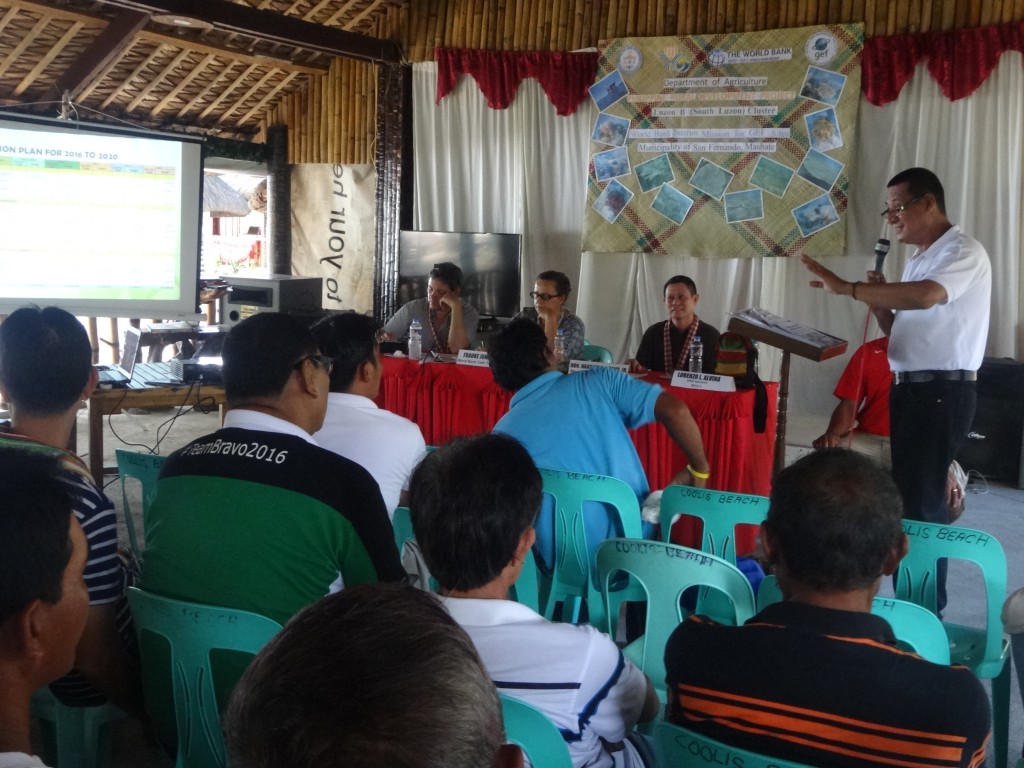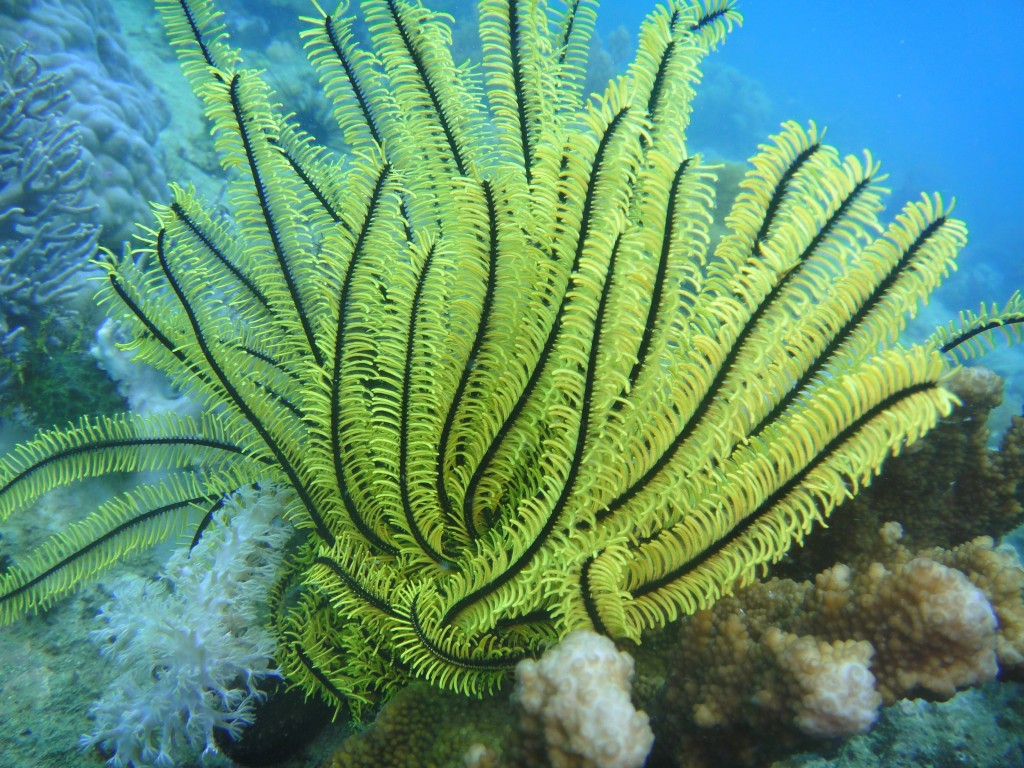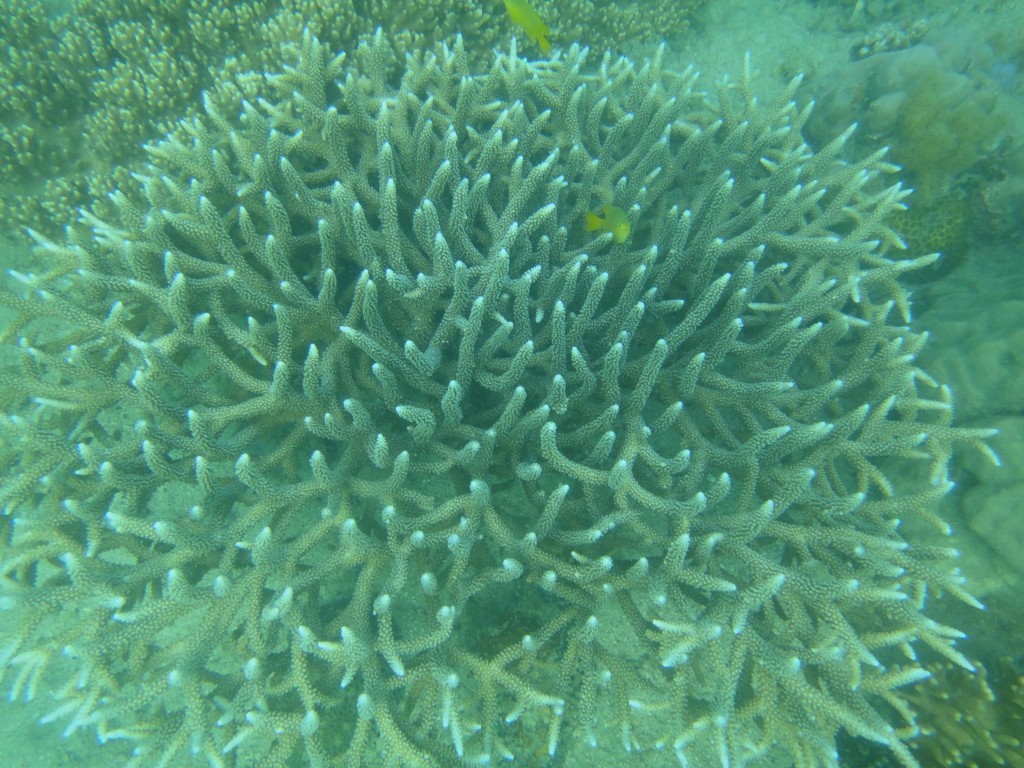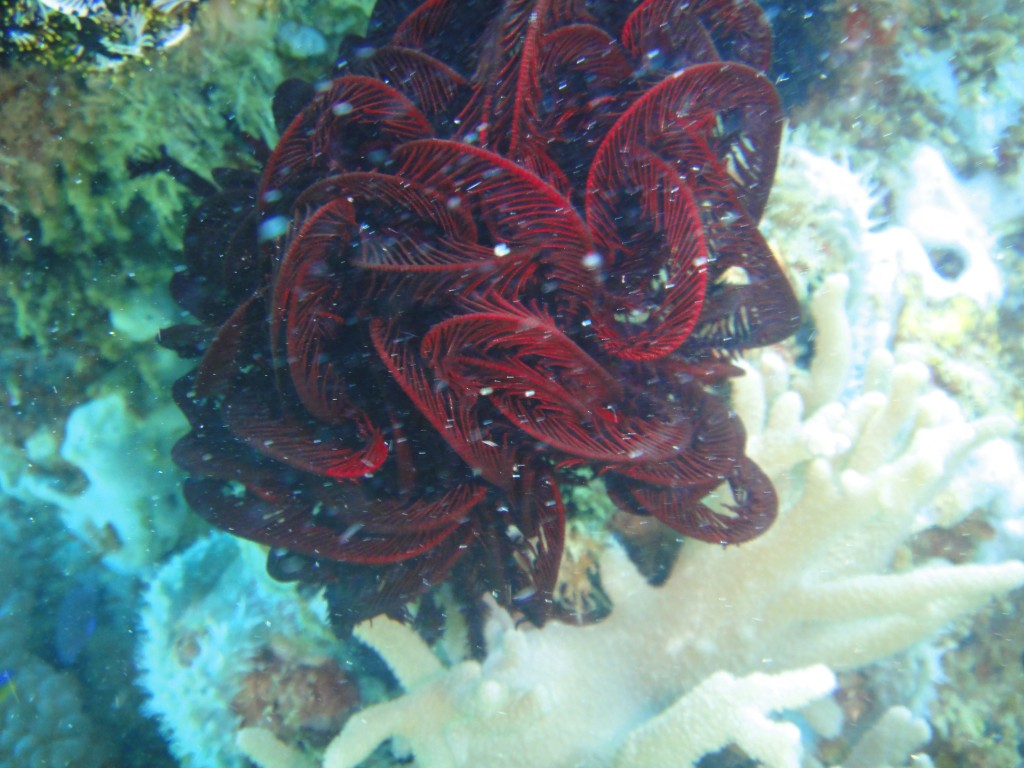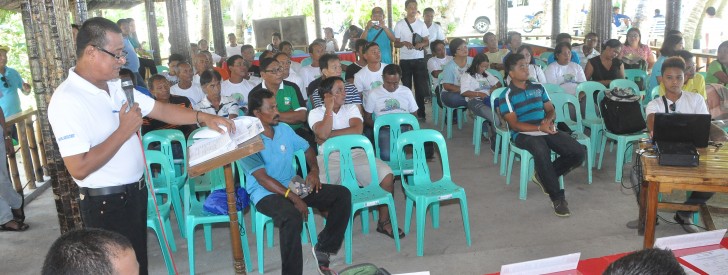 Florizel M. Lim, Municipal Agriculturist of LGU-San Fernando, Masbate, presents the proposals for the San Fernando Fish Sanctuary and Marine Reserve Rehabilitation and Improvement and Seaweeds Production Project during the World Bank Interim Mission to San Fernando Fish Sanctuary and Marine Reserve Rehabilitation and Improvement held in San Fernando, Masbate on June 29, 2016. (Photo by Hermito Antonio T. Privaldos, DA-PRDP RPCO V InfoACE Unit)
Florizel M. Lim, Municipal Agriculturist of LGU-San Fernando, Masbate, presents the proposals for the San Fernando Fish Sanctuary and Marine Reserve Rehabilitation and Improvement and Seaweeds Production Project during the World Bank Interim Mission to San Fernando Fish Sanctuary and Marine Reserve Rehabilitation and Improvement held in San Fernando, Masbate on June 29, 2016. (Photo by Hermito Antonio T. Privaldos, DA-PRDP RPCO V InfoACE Unit) Community’s teamwork, commitment in San Fernando, Masbate’s marine protected area wow WB, FAO experts
Using “kitáng” (multiple hand line) or “lagólô” (bottom-set or hook and line) fishing method, fishermen in San Fernando, Masbate, usually catch an average of 2.2 kilograms of fish like striped mackerel or roundscad after four to six hours of fishing via non-motorized boats. At 3 a.m. the fishermen go fishing, sometimes, as far as San Vicente in Samar, Visayas region, then return at 8 a.m. to sell their catch for P200 or to bring home the fish they caught for their families’ consumption.
Fisherfolk in San Fernando will soon rise from this risky and irregular means of subsistence as the Department of Agriculture Philippine Rural Development Project (DA-PRDP) in partnership with Global Environment Facility (GEF) invest on natural resource management and conservation in globally significant biodiversity areas which include the Ticao Pass.
The proposed P3,139,636-worth San Fernando Fish Sanctuary and Marine Reserve Rehabilitation and Improvement targets an increase in fish biomass by 5 to 10 percent within three to five years to increase fisherfolk’s income, promote the sustainable rejuvenation and rehabilitation on the condition of fish habitats like coral reefs, sea grass beds and mangrove areas, and provide alternative livelihood projects to marginal fisherfolk and their families.
“I think from the municipalities that we’ve seen so far, you’re the best organized. It’s very nice to see a very active Municipal Agriculture Officer and it’s very nice to see a very committed municipal mayor and it’s really nice to see that all of you are involved. I don’t think you can see this everywhere. That’s really a good start for you to do something great out of the activities that we are supportive,” said Lead Agriculture Economist and World Bank (WB) Task Team Leader Frauke Jungbluth during the World Bank Interim Mission to San Fernando Fish Sanctuary and Marine Reserve Rehabilitation and Improvement in San Fernando, Masbate on June 29, 2016.
The said activity focused on the progress of the GEF implementation in the municipality’s marine protected area (MPA) and how to transform MPA action plans to concrete MPA subproject proposals and monitoring and evaluation (M&E) activities. Jim Hancock, Natural Resource Management (NRM) Officer from the Food and Agriculture Organization, together with NRM staff from PRDP-Bicol, South Luzon and national office joined Jungbluth in conducting the interim mission which was attended by various farmers and fisherfolk organizations, local officials, Barangay and Municipal Fisheries and Aquatic Resources Council (B/MFARMC) and representatives from the local government unit, headed by Mayor Narciso R. Bravo Jr.
“I’m very pleased in coming here. Very good turn out. Very well represented. You’re thinking very comprehensively of both the MPA and microenterprise proposals especially about the MPA, initially you already have a lot of experience in doing this–the legislation, the ordinance, the enforcement, the involvement of the Bantay-Dagat, the engagement of various groups. I think you have a very solid basis from which you start,” Hancock said.
The LGU-San Fernando aims to sustain what it has already started and raise their Management Effectiveness Assessment Tool (MEAT) and Management Effectiveness Tracking Tool (METT) score from level 0 to level 3 (sustained) or 4 (institutionalized) through capability building and trainings on scuba diving and bio-physical assessment, Fishery Law enforcement, coastal resources management and MPA establishment and management. They are also proposing for the procurement of safety and navigational accessories and equipment, reorganization and strengthening of the Management Board and the Bantay-Dagat or fish wardens as well as the review and enhancement of the existing MPA Management Plan.
“I was overwhelmed with the result of the interim mission,” Florizel M. Lim, Municipal Agriculturist of LGU-San Fernando, said. He also expressed his appreciation of the cooperation and participation of the stakeholders, the local chief executive’s support, and the WB’s assistance. Lim added that he will start mobilizing his team to revise the MPA and microenterprise proposals, incorporate the WB’s recommendations, and submit them to the PRDP regional office in July 2016 for possible review, endorsement and approval of the Regional Project Advisory Board in August 2016.
The PRDP-Bicol NRM team, on the other hand, will immediately work on finding technical experts on seaweeds to support the LGU’s 1,509,750-worth Seaweeds Production Project, organizing the federation of seaweed farmers in Bicol and finalization of the FSMR Management Plan and Integrated Coastal Resource Management Plan for all GEF sites in Bicol.
GEF, an international organization that advocates environmental conservation and protection, provided a P287 million-worth grant to PRDP to support MPAs in target sites including San Fernando, the only PRDP-GEF site in Masbate in addition to targeted program areas in Bulan, Pilar, Magallanes, and Matnog, Sorsogon.
The 125-hectare San Fernando Fish Sanctuary and Marine Reserve located in the Ticao Pass, was one of the six project sites pre-identified by the DA and the Bureau of Fisheries and Aquatic Resources as target GEF site for the PRDP nationwide. Among the marine species that thrive in the area are tuna-like fishes and high-value bottom-dwelling fishes. The coral reefs in San Fernando’s municipal waters also serve as fishing grounds in both Ticao and Masbate Pass. (Annielyn L. Baleza, DA-PRDP RPCO V InfoACE Unit)
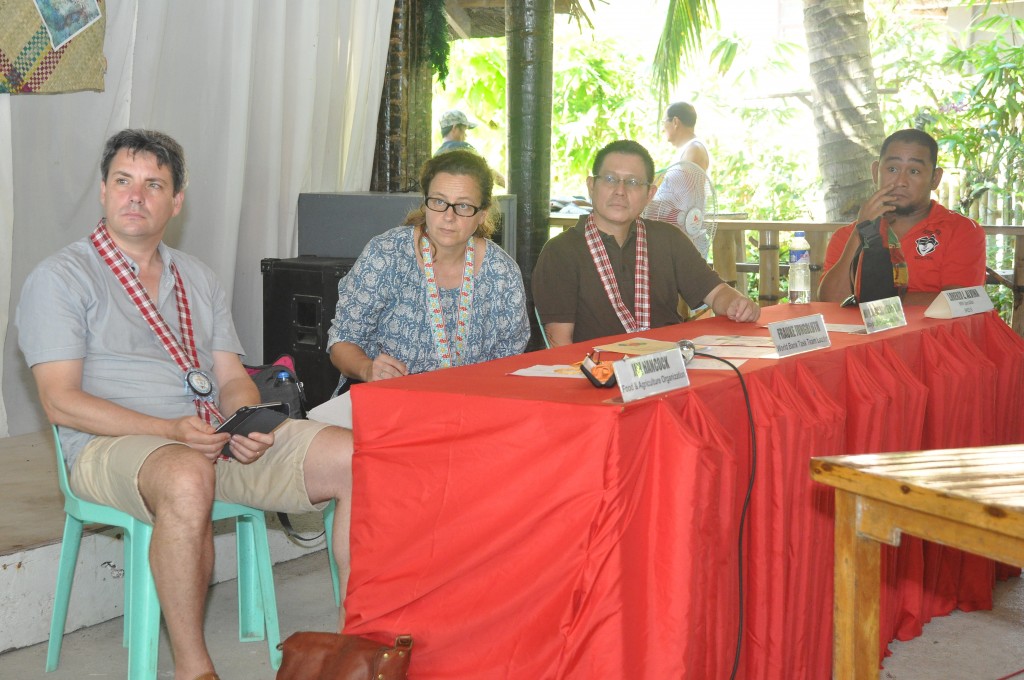
(L-R) FAO expert Jim Hancock, WB Task Team Leader Frauke Jungbluth, San Fernando Mayor Narciso R. Bravo Jr., PRDP RPCO V NRM Specialist Lorenzo L. Alvina review the presentation re: the MPA rehabilitation and improvement and microenterprise proposals of LGU-San Fernando, Masbate. (Photo by Hermito Antonio T. Privaldos, DA-PRDP RPCO V InfoACE Unit)
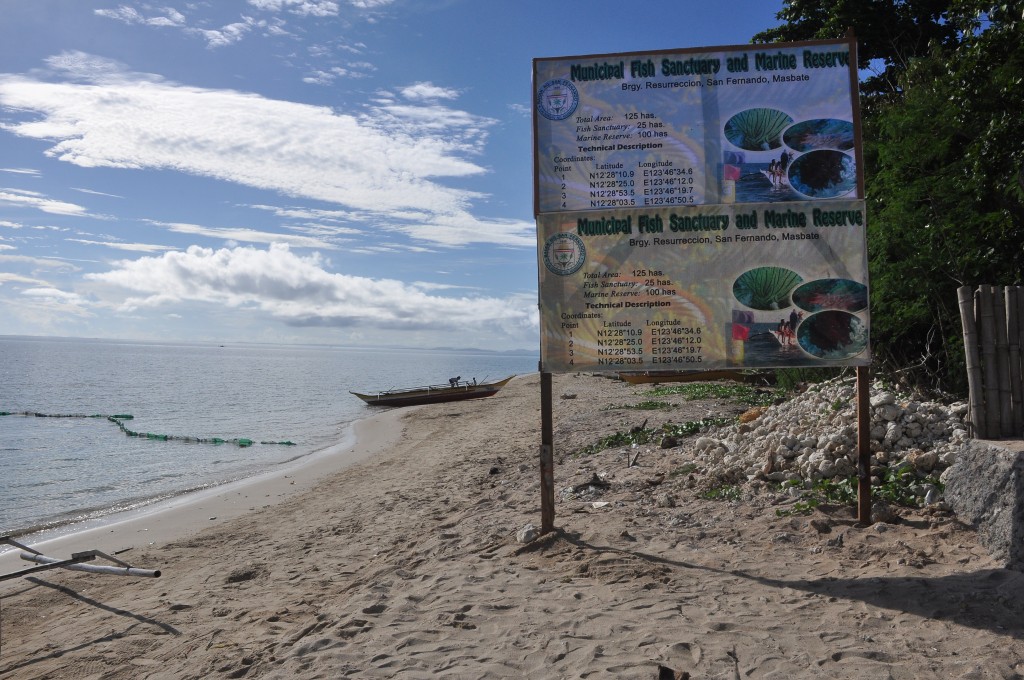
In photo is the project marker of the San Fernando Fish Sanctuary and Marine Reserve in Brgy. Resurreccion, San Fernando, Masbate. (Photo by Hermito Antonio T. Privaldos, DA-PRDP RPCO V InfoACE Unit)
The coral reefs in San Fernando’s municipal waters are important fishing grounds in both Ticao and Masbate Pass. (Photo by Resources, Environment and Economics Center for Studies (REECS)

